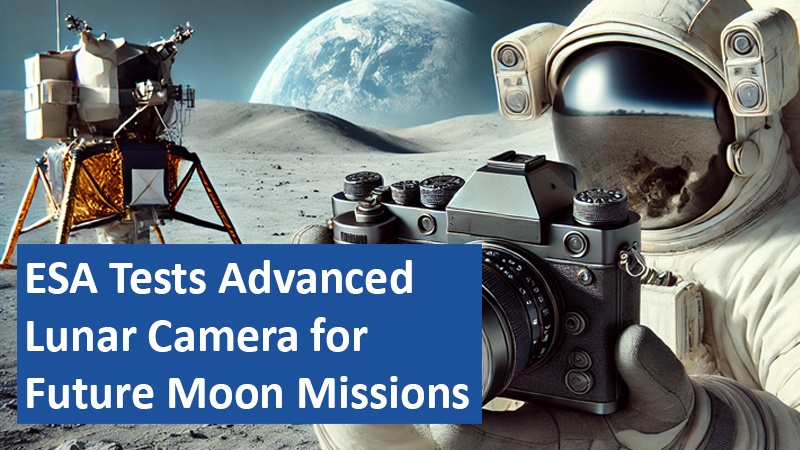The European Space Agency (ESA) recently tested an advanced lunar camera designed for NASA’s upcoming Artemis missions. This camera, built to withstand the harsh conditions of the Moon’s surface, was put to the test during the PANGAEA geology training in Lanzarote, Spain. Capable of capturing high-resolution images even in low-light settings, this innovative device could play a pivotal role in documenting future lunar missions.
By August Roberts
A Camera Built for the Moon’s Harsh Conditions

The Handheld Universal Lunar Camera (HULC) was developed to meet the unique challenges posed by the Moon’s extreme environment. The Moon’s surface experiences drastic temperature swings and lacks an atmosphere, which required the camera to be fitted with a specialized thermal shield, created by NASA. This shield protects the camera from temperatures as low as minus 200 degrees Fahrenheit, particularly in the permanently shadowed regions near the Moon’s South Pole. This area is the planned landing site for the Artemis III mission, where vast, sunless craters pose additional challenges for equipment.
User-Friendly Design for Space Suits
The HULC camera is specially designed to be operated by astronauts wearing bulky space suits and gloves. Its buttons and controls were re-engineered to ensure ease of use, even with limited dexterity. Jeremy Myers, NASA’s lead for the HULC project, emphasized the importance of astronaut feedback in refining the camera’s design. “We’ve incorporated input from astronauts to make the camera as efficient and user-friendly as possible,” Myers said, highlighting the effort to improve functionality for lunar exploration.
Testing in Lunar-Like Environments
During the PANGAEA training, the HULC camera was tested in volcanic caves and rugged terrain on Lanzarote, mimicking conditions expected on the lunar surface. The camera performed well in environments with stark contrasts between light and shadow, similar to what astronauts will encounter near the lunar South Pole. Equipped with a 200 mm telephoto lens, the camera was able to capture detailed images from long distances, providing unprecedented visual clarity for lunar exploration. Myers noted, “The camera revealed details never before seen on the Moon.”
Overcoming Low-Light Challenges
The Moon’s South Pole, where the Artemis III mission is set to land, is dominated by craters that never receive direct sunlight, making low-light performance essential. The HULC camera is designed to excel in these conditions, and during the Lanzarote tests, its flash system was rigorously evaluated in dark caves. The results were promising, demonstrating that the camera can provide clear and detailed images even in near-total darkness. These capabilities are crucial for both navigation and scientific documentation during lunar missions.
The HULC camera has proven it can handle the extreme conditions of the Moon and will be a valuable asset for future space exploration. Its durability and astronaut-friendly design could significantly enhance lunar research. This innovation highlights the importance of technology in pushing the boundaries of space exploration.
Based on information from www.dailygalaxy.com and own research.